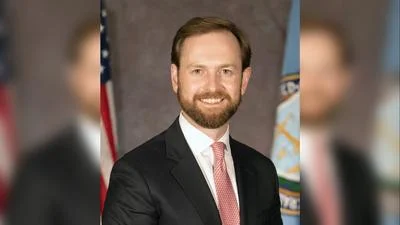Washington, D.C. - Energy and Commerce Committee Chairman Frank Pallone, Jr. (D-NJ) delivered the following opening remarks today at a Consumer Protection and Commerce Subcommittee hearing on “Autonomous Vehicles: Promises and Challenges of Evolving Automotive Technologies:"
Last year, nearly 37,000 people were killed in motor vehicle traffic crashes. Another 4.5 million were injured. According to the National Highway Traffic Safety Administration (NHTSA), human factors, such as driving errors, speeding and drunk driving, are linked to 94 percent of serious motor vehicle crashes.
Automakers, often pushed by Congress and regulators, are integrating technology into vehicles that mitigate human error and save lives. Advanced driver assistance systems have arrived and are already reducing unnecessary motor vehicle deaths and injuries. Other technologies like automatic emergency braking, lane departure prevention, and blind spot detection are in luxury vehicles today and will hopefully be in all cars soon. These incremental technologies will save lives, and we must continue to advance these technologies.
At the same time, we also must look to revolutionary advancements that may transform vehicle safety. Soon, these advanced systems may be replaced by systems that don’t need a driver at all. Several companies are actively testing and developing self-driving cars. These vehicles are programmed to avoid risky and dangerous driving behaviors. Self-driving vehicles could also provide a vital means of transportation for people with disabilities, the elderly, and communities lacking access to traditional public transportation.
But technology is only as reliable as its human developers. In March of 2018, an Uber self-driving test vehicle struck and killed a pedestrian in Arizona. The National Transportation Safety Board (NTSB) found that the vehicle did not have the capability to classify an object as a pedestrian unless the object was near a crosswalk. The NTSB has launched five other investigations into crashes involving vehicles with varying degrees of automation. It found that some-self driving cars cannot detect and avoid common roadway hazards and vehicle occupants can over rely on the technology.
Safety and deployment must come hand in hand - we cannot have one without the other. Because ultimately, public acceptance of self-driving cars depends on their reliability and safety. Troubling safety incidents, regulatory blackholes, and lax oversight threaten to disrupt this critical balance and the future of this technology itself.
For self-driving cars to succeed and make our roads safer appropriate safeguards must be in place - protections to ensure self-driving cars operate safely and adhere to state and local law. Federal regulators must have a hands-on approach to self-driving technology. They must ensure that safety is engrained in every sensor, feature, and line of code of a self-driving car. Regulators also must have the expertise to understand self-driving technology and not simply rely on the assurances of technology companies.
Congress also plays an important role. We can bridge safety gaps by creating a national roadmap for self-driving cars. We should pass legislation that establishes safety standards and regulations for the gradual deployment of self-driving cars. The legislation should facilitate the collection and reporting of vital crash and incident data, and protect Americans’ rights to access the courts for the inevitable incidents related to self-driving cars. It should also promote consumer awareness and provide robust resources to federal regulators to oversee these complex technologies, while also preserving the appropriate role of state and local governments.
We are working on a bipartisan, bicameral basis to draft a self-driving car bill that will help ensure that these life-saving technologies are safely deployed. I thank the Ranking Member for his partnership on this effort and look forward to continuing our work to advance legislation that enjoys broad support.





